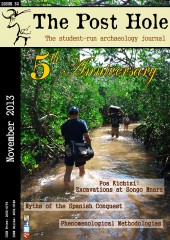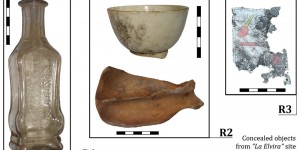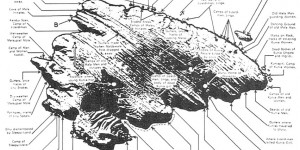How could a “handful of Spanish” conquer and submit an empire? Were Columbus and Cortés exceptional men? In this article, the stereotypes surrounding key figures of the Conquest will be challenged.
A famous sentence states that “a lie told often enough becomes truth”. We could easily say that the same lie, if repeated often enough and throughout time, may eventually become ‘history’. Such process is particularly evident in the case of the Spanish conquista of South America. In standard history texts and in the common perception, Columbus and the conquistadores (particularly Cortés and Pizarro) are represented as men of exceptional wits and uncommon strategic skills, who, in the company of a handful of brave men, conquered and defeated powerful empires. In truth, as Restall proves in his book Seven Myths Of The Spanish Conquest (2003), nothing is further from reality. In this short article, we will analyse the common perception of the conquistadores as exceptional personalities and we will explain how such understandings became history.
Sometimes men make history, and other times men happen to be in the right place at the right time. It is the case of Cortés and Pizarro: two conquistadores who are often presented as endowed with the geniality of great strategists such as Caesar or Napoleon. Their successes in conquering empires at the command of a handful of brave men have been commonly considered as tautological truths even by famous scholars like Todorov (1984) and Jared Diamond (2005). In truth, taking such elements for granted may become yet another way of indirectly supporting Western superiority even in the case of those who attribute the successes of the Spanish mostly to their sophisticated technology (Diamond 2005) or to their readiness in exploiting the military weaknesses of the natives (Todorov 1984).
Columbus
One of the best examples of historical idealisation concerns the figure of Columbus. In the previous centuries, the Italian explorer has been characterized in a number of different ways, ranging from the brave hero to the misunderstood intellectual. Nevertheless, there are two elements which must be taken into consideration when analysing this enigmatic character: the content of the letters he wrote to the Spanish Crown and the perception of Columbus as a visionary and illuminated man.
Most of what we know about Columbus’s personality and ideas derives from what he documented about himself and his travels. In such documents, Columbus tends to oscillate between two tendencies: the idealisation and admiration of his discoveries and a veiled self-commiseration revealing his perception of himself as an unappreciated intellectual. The letters he wrote to the Spanish monarchs during his travels were aimed at maintaining the funding of the Crown: the “wonders” of the New World are therefore presented in excessively colourful terms to convince the Spanish rulers of the success of their investments. An emblematic example is represented by Columbus’s description of his interactions with natives. In the letters addressed to the King he would emphasize the great deal of information acquired from the locals, but then in his personal notes we can often read how disheartening it was not to understand a word of what the “Indians” were saying.
Secondly, the idealization of Columbus as a visionary genius derives from the fact of his being firmly convinced of the roundness of the earth, making us see him as opposed to the darkness of ignorance embodied mostly by the church. Nevertheless, as Restall (2003) argues, by the time Columbus planned his travels most educated people took the roundness of the earth for granted. This idealisation is therefore a fabrication of history, derived from the inevitable study of the past with the wisdom of hindsight. Like the Conquest itself, Columbus’s “enterprise” must be therefore set in the context of mercantile rivalry and continual exploration rather than separated out as the unique deed of a misunderstood visionary man.
Cortés and Pizarro
As Restall (2003) demonstrates, brave though Cortés and Pizarro may have been, they simply followed the patterns which had been laid down by dozens of conquistadores before them. The myth of the exceptional men emerged mostly from the survival of probanza de merito (“proofs of merit”) in Spanish archives. These were letters and documents which conquistadores would send to the Spanish crown to illustrate their successes in order to obtain titles, lands and privileges. It is therefore obvious that, due to the incredible amount of competition, the main concern of a conquistador was to have the ability to present himself and his actions as genial, inspired and unique in order to obtain the monarch’s approval. What was therefore a common pattern (looking for an interpreter, gaining knowledge of the territory from the natives, exploiting local rivalries) was presented to the Crown as tokens of the unprecedented spirit of initiative of the individual. Because of the undeniable bias of the probanzas, Restall (2003) calls for the necessity of inserting the figures of the conquistadores into their actual conquest, reminding us that exceptional courage (not everybody was or is willing to march through unexplored lands) did not make Cortés or Pizarro different from other conquistadores; they simply happened to be the ones who bumped into the most powerful empires.
This short article is an introduction to the fabrication of history resulting from the uncritical use of evidence containing an undeniable and interested bias. The persistence of such documents and the almost total absence of a native voice have greatly contributed to the creation of the stereotype of the extraordinary men, thus furthering to some degree the assumption of Western superiority.
Bibliography
- Diamond, J. (2005). Guns, Germs and Steel: A short history of everybody for the last 13,000 years. London: Vintage.
- Restall, M. (2003). Seven Myths of the Spanish Conquest. Oxford: Oxford University Press.
- Todorov, T. (1984). The Conquest of America: The Question of the Other. Oklahoma: University of Oklahoma Press.








